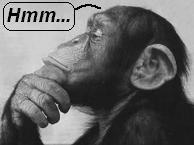 I wrote this quickly over at Stan’s this morning. Govern yourselves accordingly.
I wrote this quickly over at Stan’s this morning. Govern yourselves accordingly.
I am coming more and more to an understanding that there is nothing called style. If we line up concurrent beers, beers over time and beers across geography, there are few dividing line and as much complexity and evidence at the points of overlap between styles as there is in the core examples of style. I still come back to Jackson’s definition of style as just an homage to a classic beer and can go no farther.
This has been confirmed again recently. I am judging the NAGBW book entries right now and if I read another attempted statement of a unified theory I shall scream. Understanding all beer is impossible so we layer an abstract overlay that is with reasonable grasp and stand back to state (a) it explains everything and (b) I came up with it… so therefore I am clever and worth being paid as a beer writer. I understand the natural desire for achieving excellence in thought. I weep when I see the road to that excellence being based only on first constructing a unique proprietary analysis for that thought and staking a claim to authority. But I see it again and again. Thought needs building upon and yet surpassing what has gone before. Something seems to keep us spinning our wheels.
Further, that approach leads to grasping at the straws that can be assembled to prop up the new analysis and rejects alternate explanation early on. When I read about these local beers, I see “eureka” moments based on finding a reference to what happened in one place based on a scrap of evidence without the thought that the neighbouring town or county did not have its records survive. Why presume that there was not continuity with neighbours? When one reads Ungers books you see the path of jurisdictional autonomy that preserved the beer of Hoegaarden but you also see neighbouring towns and principalities being absorbed and modernized too. Wheat beers were common in the Low Countries, likely lots similar to that one. But because the evidence is not there, it’s like they never existed, conveniently now for the modern unified theorist of partitioned styles.
Finally, real themes appear to contradict niche style theory but seem to be rejected. How can beers like Kentucky Common be accepted while US beer thinking is blissfully walking around that tiny gap in history about ale brewing from, oh, 1600 to 1900. How can a part of a likely much larger whole be proclaimed as being autonomous without connections and continuities being defined. It’s not just that Albany ale still is not considered to be what it screamingly it, but it is only an example. Masses of unexplored town and city brewing and drinking experiences go unexplored I suspect because they do not fit neatly into the twin requirements of tight stylistic definition and proprietary unified theory.
Not a rant. Nor an accusation. An invitation either to prove me stupid (always a possibility) or at least see a concurrent bigger analysis that might undermine indigenousness and its kin fatally. Offered with greatest respect to the above.
